Phenomenology of Revelation: Faith, Truth, and the Darkness of God in Sixteenth-Century Italy
Abstract
1. Introduction
2. Faith and the Night Sky
Se di notte serena il Ciel sì puro
e terso appare; e sì lucenti, e belle
i lor tremanti rai vibran le stelle
per l’aer chiaro, e senza Luna oscuro.
Com’esser può, ch’un sozzo, horrido, impuro
Spirito aspiri: over mai saglia a quelle
Sedie beate? Ma ne mira ad elle,
Ne pensa un cor grave, terreno, e duro. (Sonnet 35, vv. 1–8)
If, on a serene night, the Sky appears so pure and spotless, and the stars, so bright and beautiful, [with] their trembling rays vibrating through the clear, dark, moonless air, how can it be that a foul, dreadful, impure spirit never aspires or rises to those blessed seats? Rather, a heavy, worldly, and hard heart neither looks at [the stars] nor thinks of them.
- In this nocturnal scene, the moon is present only by mention of its absence: it is the night of a new moon when the sky is darkest, and the celestial lights shine brightest. The poet describes a vision of the heavens scintillating and pulsating as if alive. The unfaithful, however, do not see the luminous display above. They remain in literal and figurative obscurity. Sforza seeks to overcome their failure to be moved by insisting on viewing. He makes available what they would not otherwise raise their eyes to see, offering in verse what God provided in nature to encourage their gaze and the cultivation of faith and moral uprightness.
Eterna luna, alor che fra ’l Sol vero
e gli occhi nostri il tuo mortal ponesti
Lui non macchiasti, e specchio a noi porgesti
da mirar fiso nel Suo lume altero.
Non L’adombrasti ma quel denso e nero
velo del primo error coi santi onesti
tuoi prieghi e i vivi Suoi raggi rendesti
d’ombroso e grave candido e leggiero. (S1:110, vv. 1–8)
Eternal moon, when you placed your mortal self between the true Sun and our eyes, you ma[d]e no blemish on his light but offered us a mirror so we could look straight into his high brightness; you did not dim his light, but with your holy pure prayers and his bright rays, you made limpid and light that dense black veil of man’s first error where it had once been heavy and dim.4
- Both the moon and Mary mediate the divine and the eternal for humans, with the Virgin Mother additionally serving as a model for devotion.
Hor che nel puro Ciel splendon le stelle,
E per la cheta notte il sonno regna,
Non ti traggan per terra hor queste, hor quelle
Cure mondane, Anima eccelsa, e degna.
Ne lascivo ocio in piume ti ritenga.
Ma sorgi da le dolci spine, e felle.
E se sai, di volar la sù t’ingegna,
Mirando in quelle fiamme ardenti, e belle.
Là sù cose invesibili, ed eterne;
Quì visibli son, caduche, e frali.
Quì pena, e morte, & ivi è gloria, e vita.
Quì in parte, s’apri levi, e monde l’ali,
Quella luce vedrai, ch’a le superne
Sedie ti s’aprirà chiara, infinita. (Sonnet 45)
Now that the stars shine in the pure Sky and sleep reigns over the still night, O most high and worthy Soul, worldly cares do not drag you, now here, and now there across the earth. Let no lascivious idleness in down hold you back. Rather, rise from the sweet and treacherous feathers. And if you know [how], apply [all] your wits to fly up above, taking aim at those blazing and beautiful flames. Up there, things are invisible and eternal; here, visible, fleeting, and fragile. Here is suffering and death, and there, glory and life. Here, if you open and raise your pure wings, you will see, in part, the clear and infinite light that will open the supernal seats to you.
- The poet has shunned both sloth and sin in abandoning the feather pillow. Neither slumber nor acedia holds him back or tethers him to the earth. Having risen from his downy headrest, the poet encourages his soul to soar. The symbolism is uniquely suggestive even if the trope is common. The governing image of feathers (“piume,” v. 5) is Petrarchan. The fifth verse of Sforza’s sonnet alludes quite clearly and specifically to Petrarch’s “oziose piume” (“pillows of idleness,” v. 1) in Rvf 7.5 In Sforza’s poem, the feathers represent both the thing to flee (idleness) and the means of escape (winged ascent) while subtly indicating both life and death—that of the soul through the symbol of the bird, twice evoked: as animatedly present in the imagined flight of verse seven; as absent, or formerly present, in the still image of its inanimate plumage in line five.
O’ fortunato chi fuggendo il mondo,
E diletti, e ricchezze, si ritira
In qualche aspra spelonca, over sospira
In sacra cella a Dio dal cor profondo;
Quella eletta in palaggio alto, e giocondo;
E contra i primi suoi falli s’adira.
Quanto ben può, qualhor di notte mira
Il Cielo andar di stelle ornato a tondo,
Pensare, e dir, in quel cui servo io spero,
Che da quì a poco tempo la sù fia
La mia magion con gli Angeli, e co’ Divi.
Vada chi vuol d’oro, e di gemme altero,
Pur ch’ivi alberghi, & ivi ricco io sia,
Quì d’ogni bene il Ciel mi spogli, e privi. (Sonnet 40)
O how fortunate is the one who, fleeing the world, and pleasures, and riches, withdraws into some rugged cave, or in a holy cell, yearns for God from the heart’s depths; that [soul is] elected to the high and merry palace, and becomes angry about her past transgressions. As much as possible, whensoever at night she watches Heaven adorned with stars circle around, she thinks, and says: “I hope in that which I serve, so that, in a short time, from here, my abode will be there with the Angels and with the Saints. Begone the proud one who wants gold and gems. So that I might live there, and there be rich, here Heaven strips me and deprives me of every possession.”
- In this sonnet, Faith encourages contemplation of the heavens, both the beautiful sky and its luminous bodies, and the divine realm beyond the firmament containing them, the empyrean, where the blessed dwell with God in a realm beyond time and space. Christian tradition had it that there were three heavens, the third of which we associate with Dante’s empyrean and Christian heaven proper.7 Both to merit it in the afterlife and to glimpse it while living required stripping oneself of earthly desires and possessions, or as this essay will show, closing off the senses to them. This was understood as entering into poverty—a condition of possessionlessness, or absence of the desire to possess, by which one ultimately comes to possess all or to be possessed by the All, the transcendent divine.
3. Faith and the Darkness of God
- Descriptions of God’s glory appear in the lyric poetry of both Vittoria Colonna and Michelangelo.10 Colonna alludes to the phenomenon of God’s darkness in the first two verses of sonnet S1:88, where she addresses the Lord as an unreachable light in a high mist:
Signor, che ’n quella inacessibil luce,
quasi in alta caligine, T’ascondi,
ma viva grazia e chiari rai diffondi
da l’alto specchio on’ogni ben traluce,
genera il tutto ed a fine il conduce
un solo cenno Tuo, che puri e mondi
far può gli affetti altrui di sozzi immondi
pur che l’uom segue Te, suo vero Duce. (S1:88, vv. 1–8)
Lord, you who in that inaccessible light,
almost in a great fog, hide yourself,
but spread lively grace and splendid rays
in the mirror where every good shines forth,
all is created and brought to its end
with your single word, what thousand worlds
it can make and unmake, since in the earth’s deep
pits, and in heaven, you are the true leader.11
- Emphasizing the creative power of the divine Word in the second quatrain, Colonna draws attention to the biblical God of Genesis as cosmic maker. She displays her own creative powers of imagination in figuring a material depiction of an immaterial reality in sonnet S1:64. Picturing heaven, the poet imagines the blessed enjoying light without shadow, free from the “chiaroscuro” (“chiaro e scuro,” v. 5) that defines mortal existence:
In forma di musaico un alto muro
d’animate scintilla alate e preste,
con catene d’amor sì ben conteste,
con l’una porge a l’altra il lume puro
Senz’ombra che vi formi il chiaro e scuro,
ma sol vivo splendor del sol celeste
che le adorna, incolora, ordina e veste,
d’intorno a Dio col mio pensier figuro. (S1:64, vv. 1–8)
In the form of a mosaic, a high wall of winged swift live sparks of fire, bound together so well with chains of love that each offers its pure light to the others, without any shadow that gives shape through chiaroscuro but only the bright splendor of the heavenly Sun, which adorns, colors, and orders them and clothes them in light—this I figure in my thought, arrayed around God.12
- The acoustic dimension of the sonnet amplifies its meaning. The rhyme of “muro” (“wall,” v. 1), “puro” (“pure,” v. 4), “chiaro and scuro” (“chiaroscuro,” v. 5), and “figuro” (“figure,” v. 8) evokes the image of a rarefied incorporeal barrier separating light from darkness.
Quando fia il dì, Signor, che ’l mio pensero,
intento e fisso in Voi sempre, Vi veggia?
ché mentre fra le nebbie erra e vaneggia
mal si puote fermar nel lume vero.
[…]
onde non più da rai foschi od illustri
s’affreni o sproni l’alma, ma, disciolta,
miri il gran Sol nel più beato Cielo! (S1:90, vv. 1–4, 12–14)
When will the day be, Lord, in which my thought,
always intent and fixed on you, might see you?
For while it wanders and roves through the fog,
it cannot rest in the true light.
[…]
so that the soul might no longer be held back or pushed away
by dark or shining rays, but, let loose,
might admire the great Sun in the most blessed Sky.13
- Addressing his father in heaven rather than the Father in heaven in a moving unfinished capitolo from the early 1530s, Michelangelo described the afterlife in comparable terms of shadow and light:
Novanta volte el sol suo chiara face
prim’ha nell’oceàn bagnata e molle,
che tu sie giunto all divina pace.
[…]
Fortuna e ’l tempo dentro a vostra soglia
non tenta trapassar, per sui s’adduce
fra no’ dubbia letizia e certa doglia.
Nube non è che scuri vostra luce,
l’ore distinte a voi non fanno forza,
caso o necessità non vi conduce.
Vostro splendor per notte non s’ammorza,
né cresce mai per giorno, benché chiaro,
sie quand’el sol fra no’ il caldo rinforza.
Nel tuo morire el mie morire imparo,
padre mie caro, e nel pensier ti veggio
dove ’l mondo passer ne fa di raro.
Non è, com’alcun crede, morte il peggio
a chi l’ultimo dì trascende al primo,
per grazia, etterno appresso al divin seggio
dove, Die grazia, ti prosumo e stimo
e spero di veder, se ’l freddo core
mie ragion tragge dal terrestre limo. (F42/G86, vv. 37–42; 49–66)
Ninety times did the sun plunge and soak
its bright torch in the ocean, before
you attained to divine peace.
[…]
Fortune and Time, who produce among us
doubtful merriment and certain pain,
no longer try to cross beyond your doorstep.
There is no cloud that can obscure your light,
the successive hours have no power over you,
neither chance nor necessity controls you.
Your brilliance is not damped down by the night,
nor ever increased by the day, however bright,
even when the sun intensifies the heat among us.
In your death I am learning how to die,
O my dear father, and in my thoughts I see you
up there where the world only rarely lets us pass.
Death is not, as some believe, the worst for one
who, through grace, rises up on his final day
to his first eternal one near the divine throne,
where, God willing, I presume and believe you are,
and where I hope to see you, if my reason
can draw my cold heart out of the earthly mud.
- The final two verses signify that the poet’s senses must be submitted to reason if he is to be saved and go to heaven after death. We might distinguish here between the fate of the soul (based on how the senses are managed through reason during life) and the operation of the soul (to be discussed in greater detail in what follows).
Quel che nel tuo bel volto bramo e ’mparo,
e mal compres’ è dagli umani ingegni,
che ’l vuol saper convien che prima mora (L23/G60, vv. 12–14)
What I yearn for and learn from your fair face
is poorly understood by mortal minds;
whoever wants to know it must die first.
- With these lines, the poet emphasizes the fundamental distinction between the two types of love routinely contrasted in his verses and those of his contemporaries, the carnal and the spiritual:
L’un tira al cielo, e l’altro in terra tira;
nell’alma l’un, l’altr’abita ne’ sensi,
e l’arco tira a cose basse e vile. (L81/G260, vv. 12–14)
One love draws toward heaven, the other draws down to earth;
one dwells in the soul, the other in the senses,
and draws its bow at base and vile things.
- In this tercet on sacred and profane love, Michelangelo clarifies their respective sites of operation in the soul and the senses.
Perché Febo non torce e non distende
d’intorn’ a questo globo freddo e molle
le braccia sua lucenti, el vulgo volle
notte chiamar quel sol che non comprende.
[…]
E s’egli è pur che qualche cosa sia,
cert’è figlia del sol e della terra;
ché l’un tien l’ombra, e l’altro sol cria. (L46/G101, vv. 1–4, 9–11)
Since Phoebus does not stretch out and curl
his luminous arms around this cold, moist globe,
the ordinary multitude desire
to call ‘night’ that sun which they don’t understand.
[…]
Yet if it’s true that she is anything,
she’s surely the daughter of the sun and the earth:
for the latter holds her shadow, the former alone creates it.
- Michelangelo qualifies night as “that sun” that the masses “do not understand” and as a ‘not thing,’ and characterizes night as unknowable—as beyond both comprehension and being—just like the transcendent divine whose glory is too bright to be perceived by normal mortals. In a fragment preserved in Benedetto Varchi’s Due lezzioni (1549), Michelangelo describes an experience of being blinded by excessive light:
il tuo volto nel mio
ben può veder, tuo grazia e tuo mercede,
chi per superchia luce te non vede. (F85/A34, vv. 3–5)
your face can well be seen,
in mine, thanks to your mercy and your grace,
by one who, through excess light, cannot see you.
- This last example brings us to the matter of physical and spiritual perception. Vittoria Colonna makes a firm distinction in her poetry between the sensible realm of reason and the intelligible realm of the soul and of faith.
Ond’Ei li disse, poi: «Maggior è il metro
Di creder l’invisible per quella
virtù che non ha in sé ragion umana». (S1:118, vv. 9–11)
And then Christ said to him, “It is of greater merit
to believe in the invisible through the virtue
that is not possessed of human reason.15
- To have faith, Christ explains, is to believe in the unseen through the faculty “that does not contain” (“che non ha in sé,” v. 11) reason, that is, through a different faculty, presumably the one above it.16 With these words, Colonna alludes to the conception of the rational soul. A uniquely human phenomenon, which was believed to contain the intellect and the will, and to be able to function in the absence of physical organs, it encompassed the lower sensible soul, which was held to house the motive and perceptive functions, including the inner and outer senses.17 Herein lies the distinction, in the period and in her poetry, between the soul and the senses and their respective relations to faith and to reason.
Quanto è più vile il nostro ingordo frale
Senso terren de la ragion umana
tanto ella poi riman bassa lontana
da lo spirto divin, che sempre sale.
Non han principio, fin, né mezzo equale;
la ragion par col senso infermo sana
ma con lo spirto eterno è un’ombra vana,
ché con quel lume il suo poter non vale. (S1:148, vv. 1–8)
How much baser is our fragile, gluttonous earthly sense of human reason the farther below it remains from the divine spirit, which always rises. It has neither beginning, end, nor proportional means; reason appears healthy to our weak senses but a vain shadow to eternal spirit, because its power has no worth before that light.18
- As Colonna understands it, the image of God (imago dei) resides in the deepest chamber of the heart-mind where only truth can reside:
Perché la mente vostra, ornate e cinta
d’eterno lume, serbi la sembianza
del gran Motor ne la più interna stanza
ove albergar non puote imagin finta, (S1:142, vv. 1–4)
Because your mind, adorned and encompassed by eternal light, conserves the likeness of the great Mover in that innermost chamber where no false image can dwell[.]19
- Just as one covers coals to keep a fire alive through the night, Colonna writes in sonnet S1:76, so must one close the senses to protect the soul and preserve that divine light in the heart from the dark world outside:
Se per serbar la notte il vivo ardore
dei carboni da noi la sera accensi
nel legno incenerito arso conviensi
coprirli, sì che non si mostrin fore,
quanto più si conviene a tutte l’ore
chiuder in modo d’ogn’intorno i sensi,
che sian ministri a serbar vivi e intensi
i bei spirti divini entro nel core?
Se s’apre in questa fredda notte oscura
per noi la porta a l’inimico vento
le scintille del cor durean poco;
ordinar ne convien con sottil cura
il senso, onde non sia de l’alma spento,
per le insidie di fuor, l’interno foco. (S1:76)
If, to conserve the lively heat of coals
through the night, we light them in the evening
beneath the burnt ashes of dry wood, it is important
to cover them so that no trace can be seen;
how much more important is it then at all times
to shut off our senses from their surroundings,
so that they may serve as wakeful and alert ministers
to those beautiful, divine sparks that inhabit our hearts.
If, in this cold dark night, the door opens
to allow the cruel wind in to us,
the sparks of fire in our hearts will not burn for long;
with delicate care we must prepare
our senses, so that the internal fire within the soul is
not extinguished by assaults from without.20
- Though it has long been observed that Colonna wrote about the inner and outer senses, that light and darkness figure prominently in her verse, and that her visionary poems reflect contemporary contemplative practices and anticipate spiritual sight in heaven, her conception of faith and its modes of operation has been less well understood.
Ond’ il tempo comparto:
per gli occhi il giorno e per la notte il core,
senza intervallo alcun c’al cielo aspiri. (L79/G258, vv. 7–9)
Thus I allot my time:
the day for your eyes and the night for your heart,
with no intervals in which to aspire to heaven.
- The senses cannot fully discern the soul and its significance:
Ma perché l’alma per divina legge
ha lunga vita, e ’l corpo in breve muore,
non può ’l senso suo lode o suo valore
appien descriver quel c’appien non legge. (F28/G58, vv. 5–8)
But since the soul, by divine decree,
has a long life, while the body swiftly dies,
the senses can’t fully describe or celebrate
its worth, which they cannot fully perceive.
- The soul becomes fuller and richer the more one turns away from the world; that is, when one closes one’s senses and enters divine darkness, and free from earthly obsession, one opens to divine possession: “The soul gains more, the more it loses the world/and art and death do not go well together” (“Più l’alma acquisita ove più ’l mondo perde;/l’arte e la morte non va bene insieme,” F61/G283, v. 4–5).
4. Faith, Truth, and Revelation
Onora e ama e teme e prega Dio.
pe’ pascol, per l’armento e pel lavoro,
con fede, con ispeme e con desio
per la gravida vaca e pel bel toro
El Dubio, el Forse, el Come, el Perché rio
no ’l può ma’ far, ché non ista fra loro:
se con semplice fede adora e prega
Idio e ’l ciel, l’un lega e l’altro piega. (F30/G67, vv. 65–72)
He honors and loves and fears God, and prays to Him
for his pastures, for his herds, and for his work;
he prays with faith, and with hope, and with yearning
for the pregnant cow and for the handsome bull.
Doubt and Perhaps and How and Why can never
spoil him, for he is not involved with them:
if he adores and prays to God and heaven
with simple faith, he’ll bind one and bend the other.
- An exemplary creature (if not Christian), the shepherd does not doubt or waver; he asks neither how nor why; his trust is complete. He lives according to faith and not reason. The simplicity celebrated in the octave is underscored by both the syntax and style. Clear and rhythmic, the octave is defined by the polysyndeton: the thrice repeated coordinating conjunctions of “and” (“e,” v. 65), “with” (“con,” v. 67), and “for” (“per,” v. 66 and v. 68)—an accumulation echoed in the stanza’s multiple instances of enumeration.
Per la via del vero non è verità nessuna, ma solo inmaginatione di verità; e la verità è la dove ella è: come per la via di Prato non si truova mai Prato se non per i(n)maginatione, ma truovasi là dove egli è. Chosì avvien similmente per la via del falso, che e’ non vi si truova elf also se non per inmaginatione, se non là doce gli è, sichome è detto che per la via di Prato non si tuova mai Prato, ma truovasi solo dove gli è. E è più certo uno esser fuora di Prato quando gli è apresso a Prato a un trar di mano in luogo che e’ lo vegha, che e’ non è quando e’ n’è dischosto diecei miglia in un luogo che e’ lo vegha, chonoscie più non essere al vero, che non fa cholui che n’è lontano in luogo che e’ no(n) ’l vede, e più si dispiace in tutte le sua opere.
On the way of the true there is not any truth, but only imagination of truth; and the truth is there where it is; as, on the road to Prato, Prato is not to be found but in the imagination, but rather is found where it is. So it is by the way of the false, that the false is not found but in imagination, if not there where it is, as has been said: Prato is never found on the way to Prato, but only where it is. And one is more certain of being outside Prato when he sees it at arms length, then he is when ten miles distant. So, whoever is nearer the truth when he sees it, more knows himself not to be at the truth than does he who is far from it in a place from which he cannot see it; and is more unhappy in all his works.
- Michelangelo here observes how knowledge of the true appears farther the closer one comes to it, suggesting that displeasure in his own works increases as he approaches the true—an ambiguous statement that I read in light of his emanationist Neoplatonic worldview to mean that by comparison with the good, the true, and the beautiful, his works seem lesser than; one might also read into the statement the poet’s frustration with a perceived incapacity to have his works truly reflect his mental conception of them, an idea he expressed in his well-known poem, “Non ha l’ottimo artista alcun concetto” (L57/G151).
Lo spatio della via del falso è lo spatio che à la inmaginatione, che più diminuiscie quante più s’apressa al vero, come è segniato disopra; lo spatio della via del vero è la notitia di quello, che più crescie quante più vi s’apressa, e quante più vi s’apressa più conoscie che n’à più notitia non esservi dentro. Pogniano che’l vero sia quatro braccia per ogni verso e che nel vero manchi la inmaginatione, come è certo, perché che vede Iddio che è verità, non può più inmaginare. Così chi più si discosta dal vero, più gli diminuiscie e cr[e]sciegniene la inmaginatione.
The space of the way of the false is that space of the imagination that diminishes the more it approaches the truth, as shown above (the upper triangle); the space of the way of the true is the knowledge (of the true) that increases the more as it nears there (the lower triangle); and, as it is approached, he who has more knowledge, also knows more and more that he is outside of it. Let us say (sic: pogniano) that the true be four braccia on every side and that, in the true, imagination is absent, as is certain, because whoever sees God, who is truth, may imagine no more; and so who distances himself from the true, diminishes the truth for himself and his imagination increases.
- Here Michelangelo alludes to the ineffability of the mystical experience: the imagination at the point of its dissolution in truth, where the perceiving subject merges with the object of perception—God, as principle and foundation of Being, or Intellect.24 He writes:
[V]ie(n)-mene tanto nella via del vero quant’in quella dell’inmaginatione, ma parmi esser più fuora del vero che nell’angulo, perché lo comincio più a vedere. Fo sì il vero ancora più apresso al vero, e tanto più vego che io son fuora, perché l’inmaginatione, che me ’l crescieva, mi dimniuiscie; e ’l vero, per esservi più apresso, me da più notitia di sé, che mi fa paragone a quell che i’ò fatto per più vero esser men vero che nell’angolo.
It seems as much the truth as the imagination, and yet it seems more outside the truth than in the angle, because I begin to see the truth more clearly. So I make the true even nearer to the true, and just as much more I see that I am outside it, because the imagination that increases me, diminishes me; and the true, by being near at hand, makes itself more clearly known to me; and by comparison it shows me that what I had done and thought to be more true was less true than that in the angle (Or, what he had considered more true, and had cherished most, is, by contrast with the true, less true than what he had known only in imagination to be true).
- The phenomenal dissolves as the noumenal is revealed.
5. Conclusions
Funding
Institutional Review Board Statement
Informed Consent Statement
Data Availability Statement
Conflicts of Interest
| 1 | Charles de Tolnay described the scene as “an image of the autocreation of God from chaos” in (de Tolnay 1945–1960, vol. 2, p. 40). |
| 2 | All Italian poems in this article are cited from the recent critical edition by Antonio Corsaro and Giorgio Masi (Buonarroti 2016). Poems are identified according to the numbering assigned to them by Corsaro and Masi, followed by the standard numbering established by Enzo Noè Girardi in (Buonarroti 1960) for ease of reference. Unless otherwise indicated, English translations are by James M. Saslow, modified as needed to reflect differences between transcriptions of Michelangelo’s poems by Corsaro and Masi and those by Girardi, which Saslow translated in (Buonarroti 1991). Italian incipits have been provided where the first line of a given poem is not cited. The sonnets on the night are L46/G101, L47/G102, S20/G103, and S21/G104. |
| 3 | Sonnets 19, 35, 40, 42, and 45. All English translations of Sforza are mine. Riccardo Bruscagli has described the subset as a veritable “poetics of the ‘nocturnal’” (poetica del ‘notturno’); (Bruscagli 2007, p. 1603). |
| 4 | All Colonna poems are cited according to their numbering in (Colonna 1982). Sonnet S1:110 corresponds to “Eterna luna, alor che fra ’l Sol vero” in (Colonna 1546, p. 31v). The translation is by Virginia Cox. I cite from (Cox 2013, p. 200). |
| 5 | Petrarch, Rvf 7, vv. 1–2: “La gola e ’l sonno et l’oziose piume/ànno del mondo ogni vertù sbandita” (“Gluttony and sleep and the pillows of idleness have banished from the world all virtue”) [emphases mine]. The translation is by Robert. M. Durling. I cite from (Petrarca 1976, pp. 42–43). |
| 6 | In Job 37:18, the hard vault of the firmament is described in terms of reflective metal. The firmament was understood in different ways in the period (Edward 1996, pp. 98–99). |
| 7 | Thomas Aquinas (1225–1274) explains the three heavens and their relation to Aristotelian–Ptolemaic cosmology clearly in his Summa Theologica 68.1.4 (Aquinas 1948, vol. 1, p. 342): “In order then to understand the distinction of heavens, it must be borne in mind that Scripture speaks of heaven in a threefold sense. Sometimes it uses the word in its proper and natural meaning, when it denotes that body on high which is luminous actually or potentially and incorruptible by nature. In this body, there are three heavens; the first is the empyrean, which is wholly luminous; the second is the aqueous or crystalline, wholly transparent; and the third is called the starry heaven, in part transparent, and in part actually luminous, and divided into eight spheres. One of these is the sphere of the fixed stars; the other seven, which may be called the seven heavens, are spheres of the planets.” |
| 8 | Laud 60 in (Da Todi 1982), pp. 184–86, translated by Serge and Elizabeth Hughes, and corresponding to Lauda 36, “O amor de povertate,” in (Da Todi 2010), pp. 74–75. |
| 9 | He termed this “night to the soul from a natural point of view” (John of the Cross 1979, p. 156). |
| 10 | On faith and transcendence in Michelangelo, see (Corsaro 2023, pp. 292–309). |
| 11 | The English translation is by Ramie Targoff. I cite from (Colonna 2021, p. 119). For the sake of consistency in this essay, I have removed the capitalization at the beginning of each line in the English translation. |
| 12 | The English translation is by Virginia Cox. I cite from (Cox 2013, p. 198). |
| 13 | The English translation is by Una Roman D’Elia. I cite from (D’Elia 2006, p. 97). |
| 14 | S34/G133, v. 4: “e quel riposo c’anzi al nascer muore” (“and that repose that dies prior to birth.”) |
| 15 | (Colonna 2005), p. 115. The English translation is by Abigail Brundin. |
| 16 | On faculty psychology, see, especially, (Harvey 1975, pp. 31–61; Kemp and Fletcher 1993, pp. 559–76; Summers 1981, pp. 103–43 and 203–33; Kleinbub 2020, pp. 137–50; and Prodan 2024, 642–4). |
| 17 | See (Park 1988, pp. 464–73). See also (Kristeller 1940, pp. 300–15) (on thought, the soul, and immortality) and (Sgarbi 2015, pp. 15–22) (on the rational soul). |
| 18 | This translation is mine. |
| 19 | See note 18 above. |
| 20 | (Colonna 2005, p. 117). The translation is by Abigail Brundin. |
| 21 | Compare, for example, with Psalm 85:1 (Vulgate 2010–2013): “Incline thy ear, O Lord, and hear me” (Incline Domine aurem tuam et exaudi me). |
| 22 | British Museum, Ms. 23208, 9r, transcribed in (Buonarroti 1970, pp. 368–69). |
| 23 | English translations of this document are by David Summers and are cited from (Summers 1981, pp. 200–1). |
| 24 | Here I follow Christian Moevs on the metaphysics of Dante’s Comedy (Moevs 2005). |
| 25 | (de Tolnay 1945–1960, vol. 3, p. 63), describes the New Sacristy as “an abbreviated image of the universe.” I draw on Tolnay here and in the remainder of the paragraph. |
| 26 | On the phenomenology of darkness in the Christian tradition, see (Ó Murchadha 2013, pp. 84–89), and for a broader discussion of light and darkness, pp. 61–89. |
References
- Agamben, Giorgio. 1993. Stanzas: Word and Phantasm in Western Culture. Translated by Ronald R. Martinez. Minneapolis and London: Minnesota University Press. [Google Scholar]
- Aquinas, Thomas. 1948. Summa Theologica. Translated by Fathers of the English Dominican Province. New York: Berzinger Bros. Notre Dame: Christian Classics. [Google Scholar]
- Barbieri, Costanza. 2017. Sacra Vigilia: An Augustinian Interpretation of the Viterbo Pietà. In Michelangelo and Sebastiano. Edited by Mattias Wivel. London: National Gallery, pp. 65–73. [Google Scholar]
- Bruscagli, Riccardo. 2007. La preponderanza petrarchesca. In Storia letteraria d’Italia—Il Cinquecento. Edited by Giovanni da Pozzo. La letteratura tra l’eroico e il quotidiano. La nuova religione dell’utopia e della scienza (1573–1600). Padua: Piccin Nuova Vallardi, vol. 3, pp. 1559–615. [Google Scholar]
- Buonarroti, Michelangelo. 1960. Rime. Edited by Enzo Noé Girardi. Bari: Laterza. [Google Scholar]
- Buonarroti, Michelangelo. 1970. I Ricordi di Michelangelo. Edited by Lucilla Bardeschi Ciulich and Paola Barocchi. Florence: Sansone. [Google Scholar]
- Buonarroti, Michelangelo. 1991. The Poetry of Michelangelo: An Annotated Translation. Edited and Translated by James M. Saslow. New Haven: Yale University Press. [Google Scholar]
- Buonarroti, Michelangelo. 2016. Rime e Lettere. Edited by Antonio Corsaro and Giorgio Masi. Milan: Bompiani. [Google Scholar]
- Colonna, Vittoria. 1546. Le Rime Spirituali. Venice: Vincenzo Valgrisi. [Google Scholar]
- Colonna, Vittoria. 1982. Rime. Edited by Alan Bullock. Rome: Laterza. [Google Scholar]
- Colonna, Vittoria. 2005. Sonnets for Michelangelo: A Bilingual Edition. Edited and Translated by Abigail Brundin. Chicago and London: University of Chicago Press. [Google Scholar]
- Colonna, Vittoria. 2021. Poems of Widowhood: A Bilingual Edition of the 1538 Rime. Translated by Ramie Targoff. Edited by Ramie Targoff and Troy Tower. New York: Iter Press. [Google Scholar]
- Corsaro, Antonio. 2023. Trascendenza e fede nelle rime di Michelangelo. In Capricci Luterani? Michelangelo Artisa a Poeta nel Contest del Dibattito Religioso del Cinquecento. Edited by Christine Ott, Hans Aurenhammer, Marc Föcking and Alessandro Nova. Berlin: De Gruyter, pp. 292–309. [Google Scholar]
- Cox, Virginia. 2013. Lyric Poetry by Women of the Italian Renaissance. Baltimore: Johns Hopkins University Press. [Google Scholar]
- Da Todi, Jacopone. 1982. The Lauds. Edited and Translated by Serge, and Elizabeth Hughes. New York: Paulist Press. [Google Scholar]
- Da Todi, Jacopone. 2010. Laude. Edited by Matteo Leonardi. Florence: Leo S. Olschki. [Google Scholar]
- D’Elia, Una Roman. 2006. Drawing Christ’s Blood: Michelangelo, Vittoria Colonna and the Aesthetics of Reform. Renaissance Quarterly 59: 90–129. [Google Scholar] [CrossRef]
- de Tolnay, Charles. 1945–1960. Michelangelo. 5 vols. Princeton: Princeton University Press. [Google Scholar]
- Edward, Grant. 1996. Planets, Stars, & Orbs: The Medieval Cosmos, 1200–1687. Cambridge: Cambridge University Press. [Google Scholar]
- Harvey, E. Ruth. 1975. The Inward Wits: Psychological Theory in the Middle Ages and Renaissance. London: Warburg. [Google Scholar]
- John of the Cross. 1979. The Collected Work of John of the Cross. Edited and Translated by Kieran Kavanaugh, and Otilio Rodriguez. Washington, DC: Institute of Carmelite Studies. [Google Scholar]
- Kemp, Simon, and Garth J. O. Fletcher. 1993. The Medieval Theory of the Inner Senses. The American Journal of Psychology 106: 559–76. [Google Scholar] [CrossRef]
- Kleinbub, Christian. 2020. Michelangelo’s Inner Anatomies. University Park: The Pennsylvania State University Press. [Google Scholar]
- Kristeller, Paul Oskar. 1940. The Theory of Immortality in Marsilio Ficino. Journal of the History of Ideas 1: 299–319. [Google Scholar] [CrossRef]
- Libina, Marsha. 2020. Picturing Time and Eternity in Sebastiano del Piombo’s Viterbo Pietà. Sixteenth Century Journal 51: 385–418. [Google Scholar] [CrossRef]
- Malipiero, Girolamo. 1536. Il Petrarcha Spirituale. Venice: Francesco Marcolini. [Google Scholar]
- Moevs, Christian. 2005. The Metaphysics of Dante’s Comedy. Oxford: Oxford University Press. [Google Scholar]
- Ó Murchadha, Felix. 2013. A Phenomenology of Christian Life: Glory and Night. Bloomington and Indianapolis: Indiana University Press. [Google Scholar]
- Park, Katharine. 1988. Psychology: The Organic Soul. In The Cambridge History of Renaissance Philosophy. Edited by Charles B. Schmitt, Quentin Skinner, Eckhard Kessler and Jill Kraye. Cambridge and New York: Cambridge University Press, pp. 464–84. [Google Scholar]
- Petrarca, Francesco. 1976. Petrarch’s Lyric Poems: The Rime Sparse and Other Lyrics. Edited and Translated by Robert M. Durling. Cambridge and London: Harvard University Press. [Google Scholar]
- Prodan, Sarah Rolfe. 2024. From Lover’s Glance to Pilgrim’s Gaze: Vision and Discernment in Michelangelo’s Rime. Sixteenth Century Journal 55: 635–62. [Google Scholar] [CrossRef]
- Pseudo-Dionysius. 1987. The Complete Works. Edited by Paul Rorem. Translated by Colm Luibheid. London: SPCK. [Google Scholar]
- Sforza, Muzio. 1590. Rime Sacre. Venice: Farri. [Google Scholar]
- Sgarbi, Marco. 2015. Benedetto Varchi on the Soul: Vernacular Aristotelianism between Reason and Faith. Journal of the History of Ideas 76: 1–23. [Google Scholar] [CrossRef] [PubMed]
- Summers, David. 1981. Michelangelo and the Language of Art. Princeton: Princeton University Press. [Google Scholar]
- Turner, Denys. 1995. The Darkness of God: Negativity in Christian Mysticism. Cambridge: Cambridge University Press. [Google Scholar]
- Vulgate. 2010–2013. The Vulgate Bible: Douay-Rheims Translation. Edited by Edgar Swift and Angela M. Kinney. 6 vols. Cambridge: Harvard University Press. [Google Scholar]
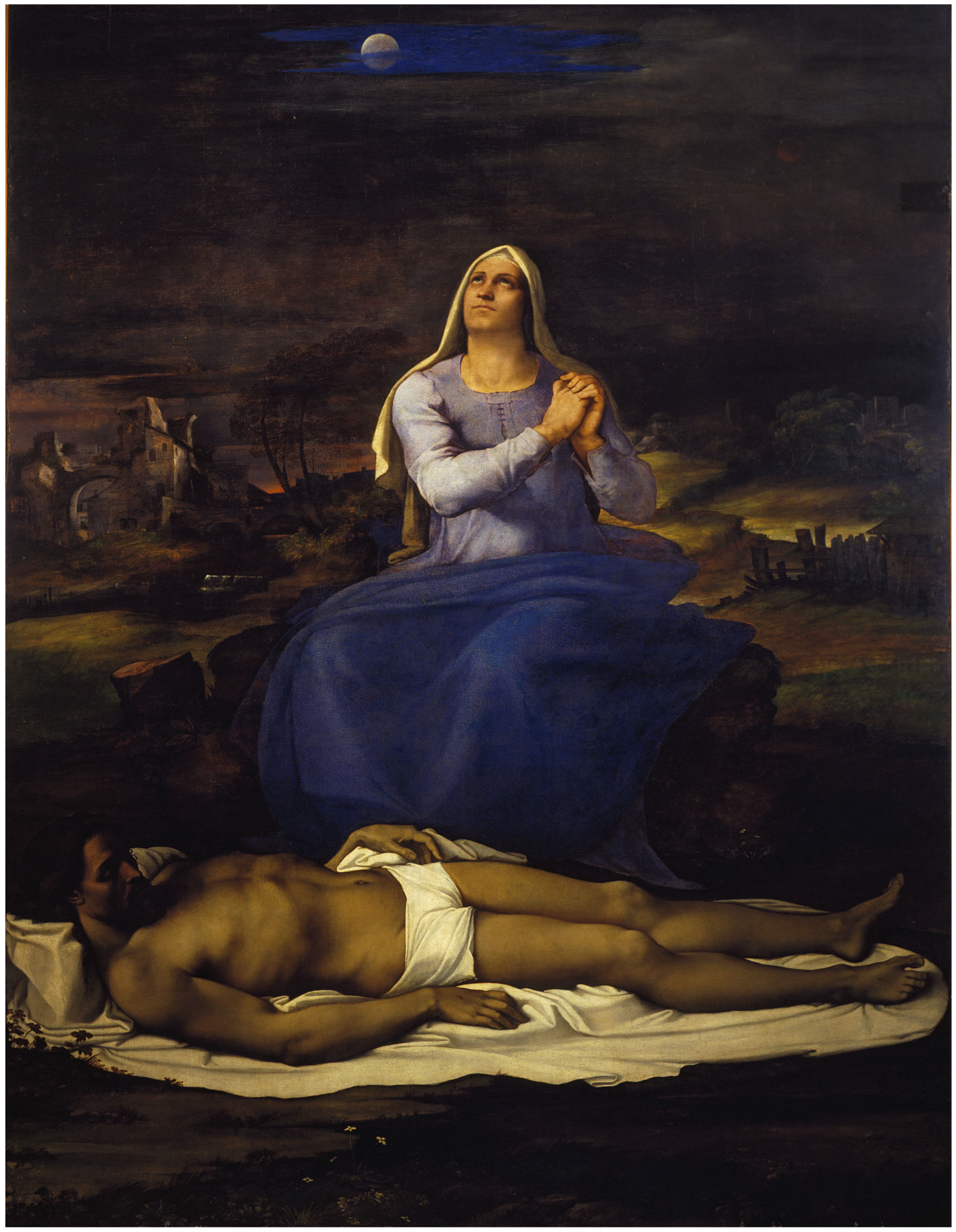
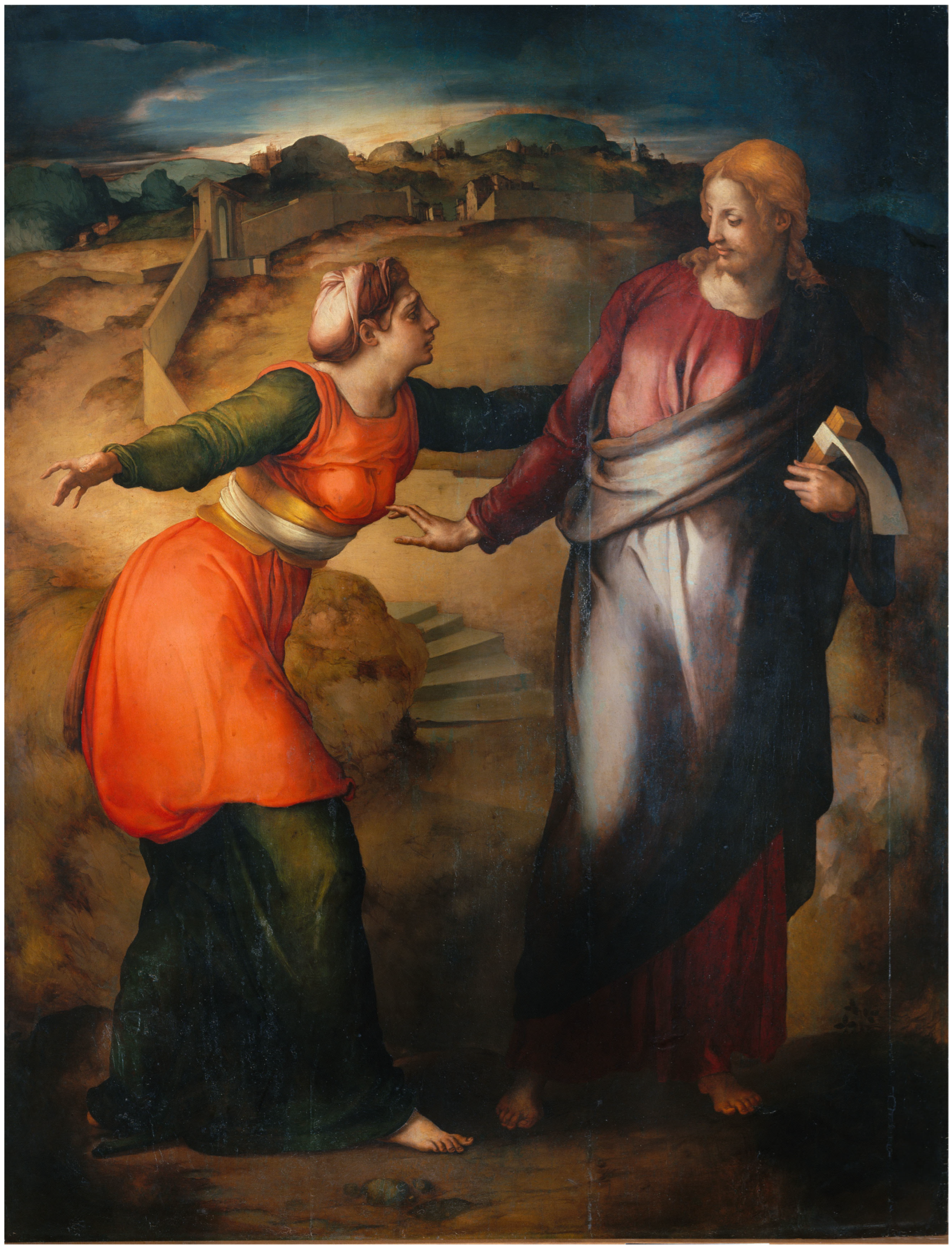
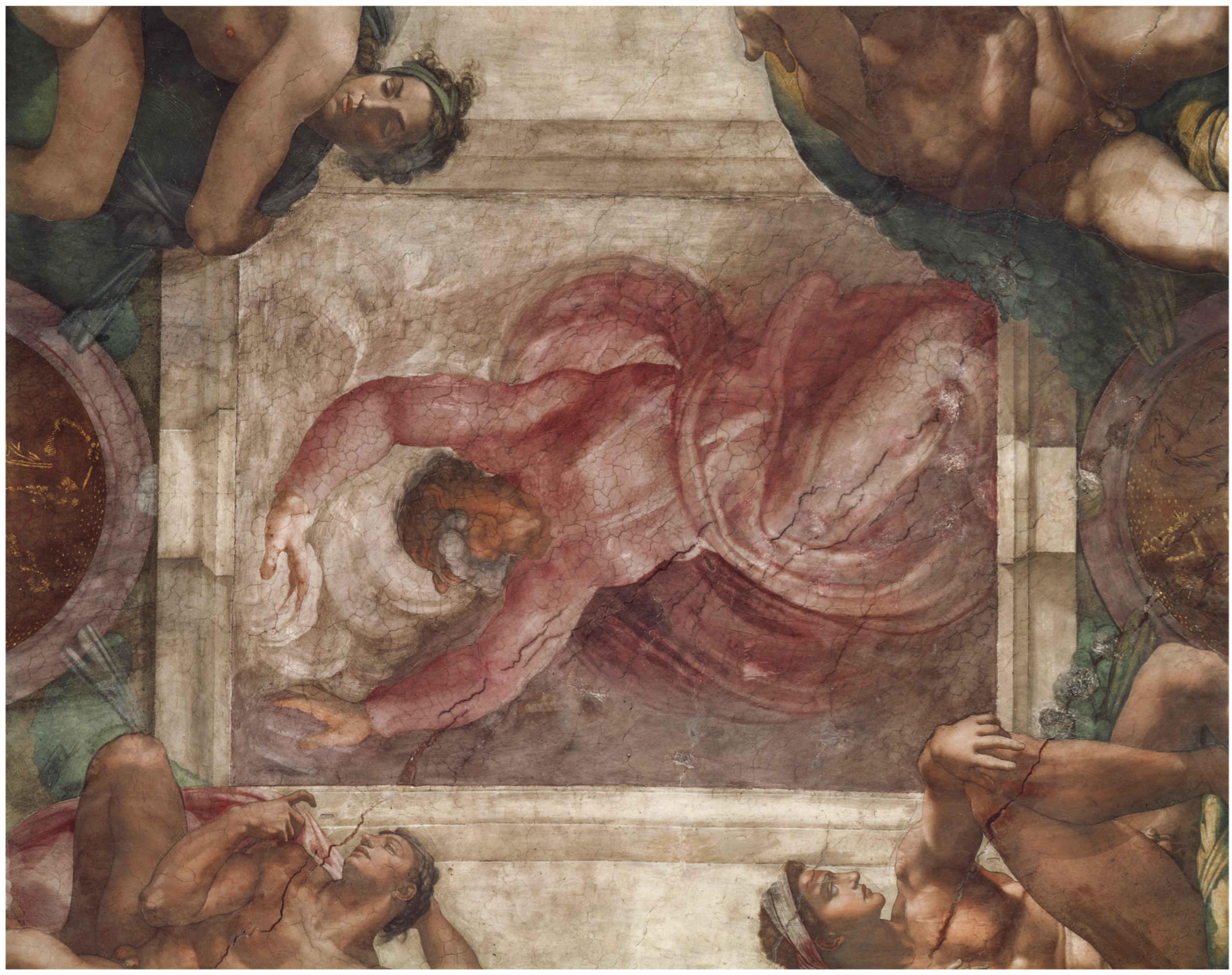
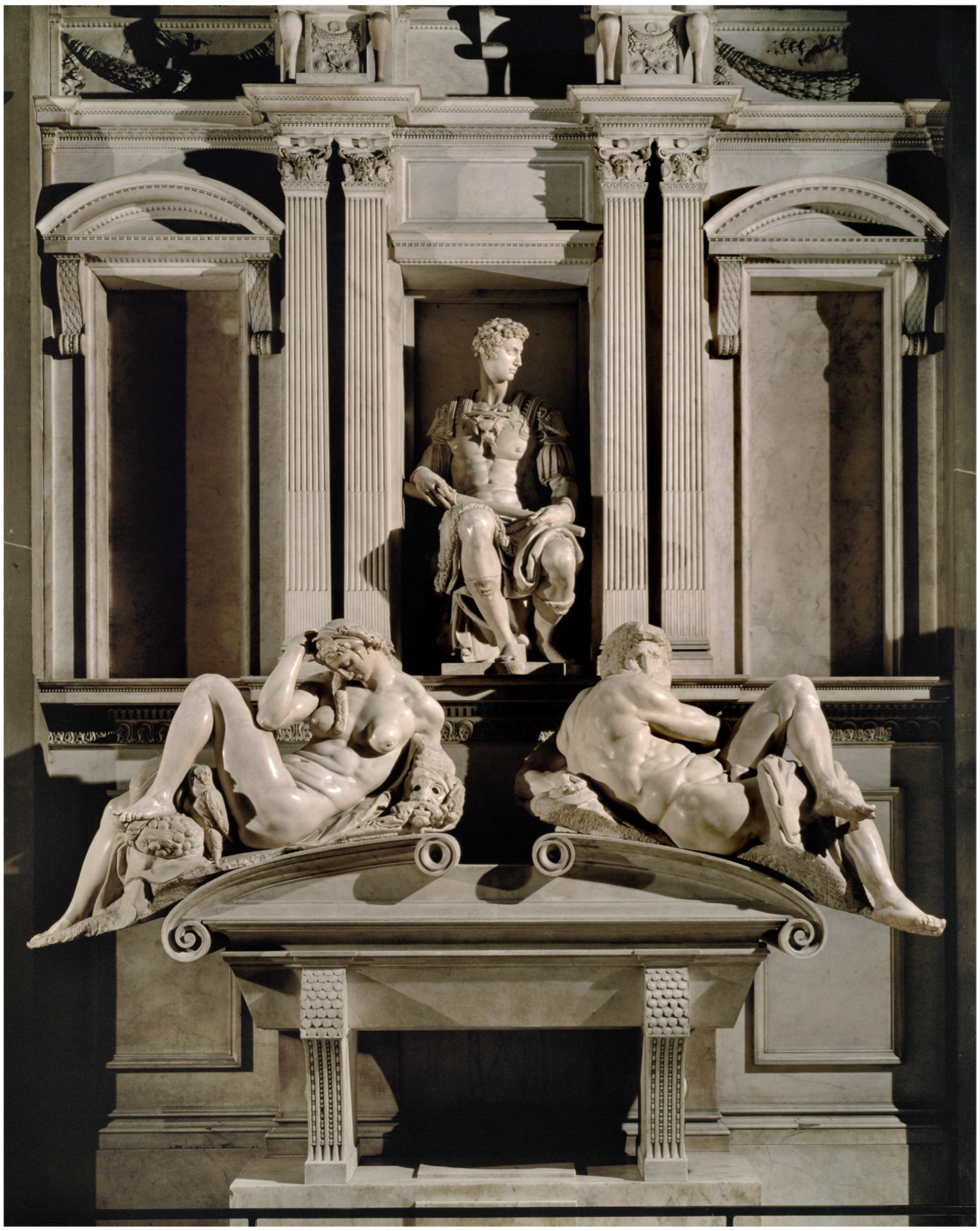
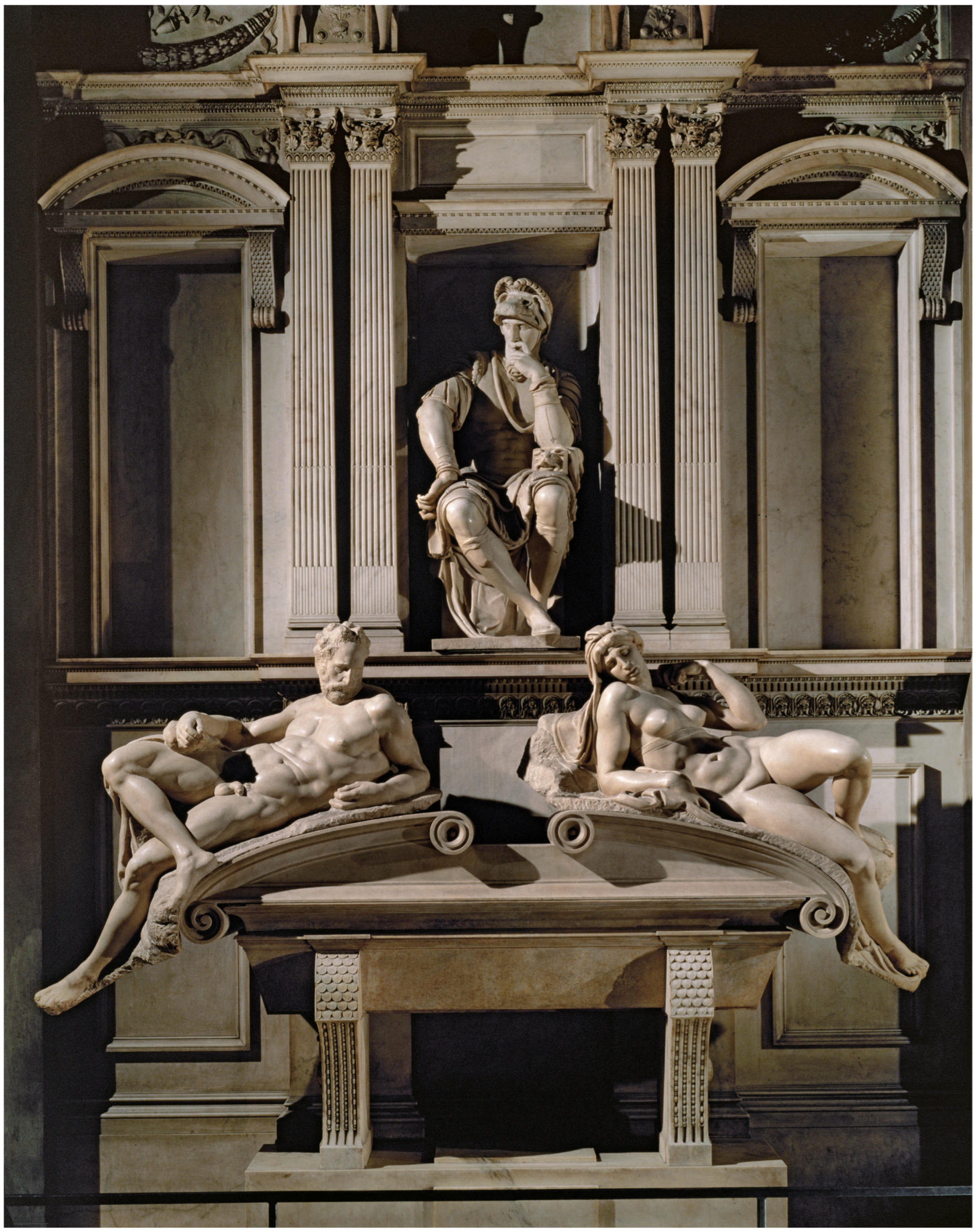
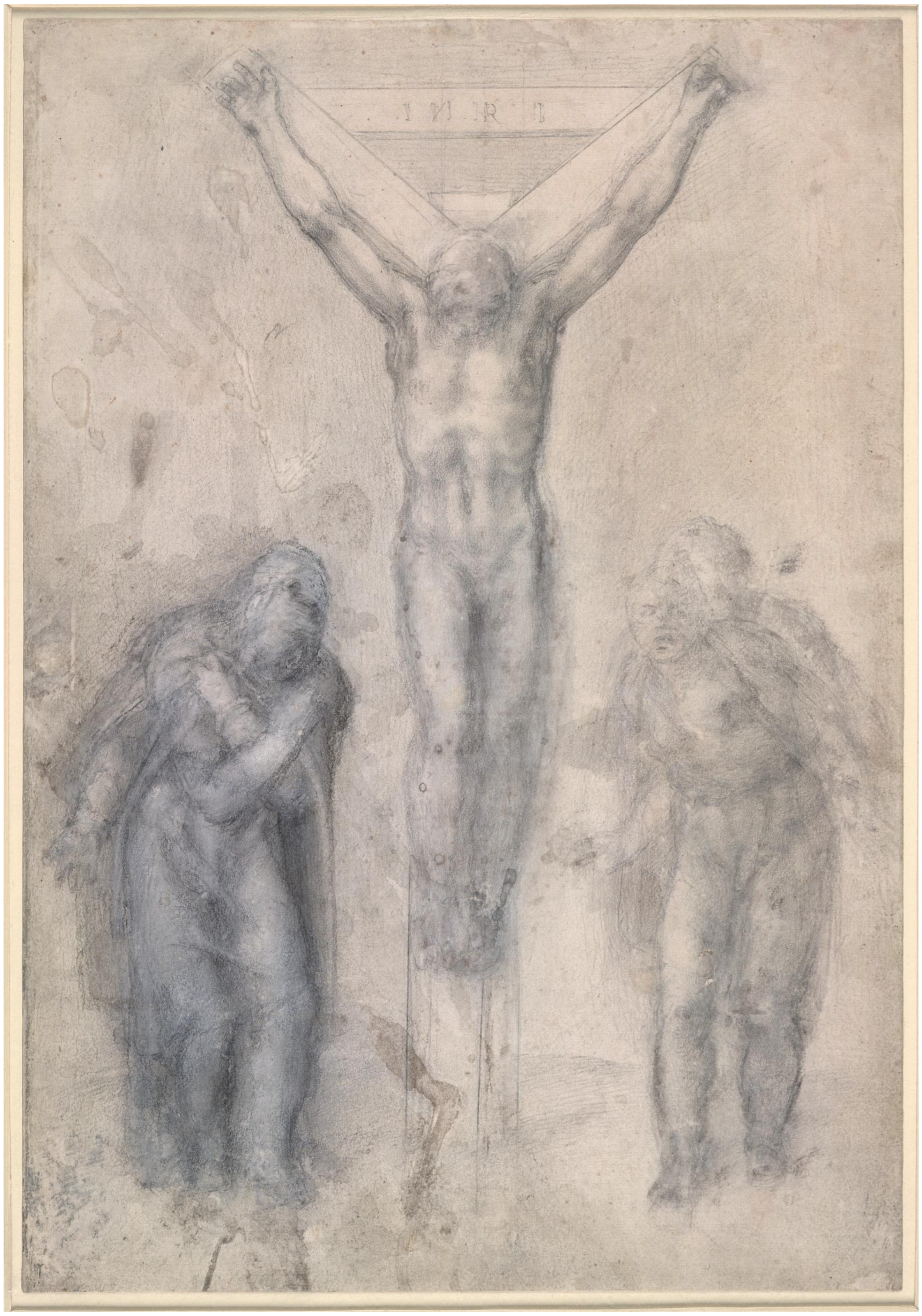
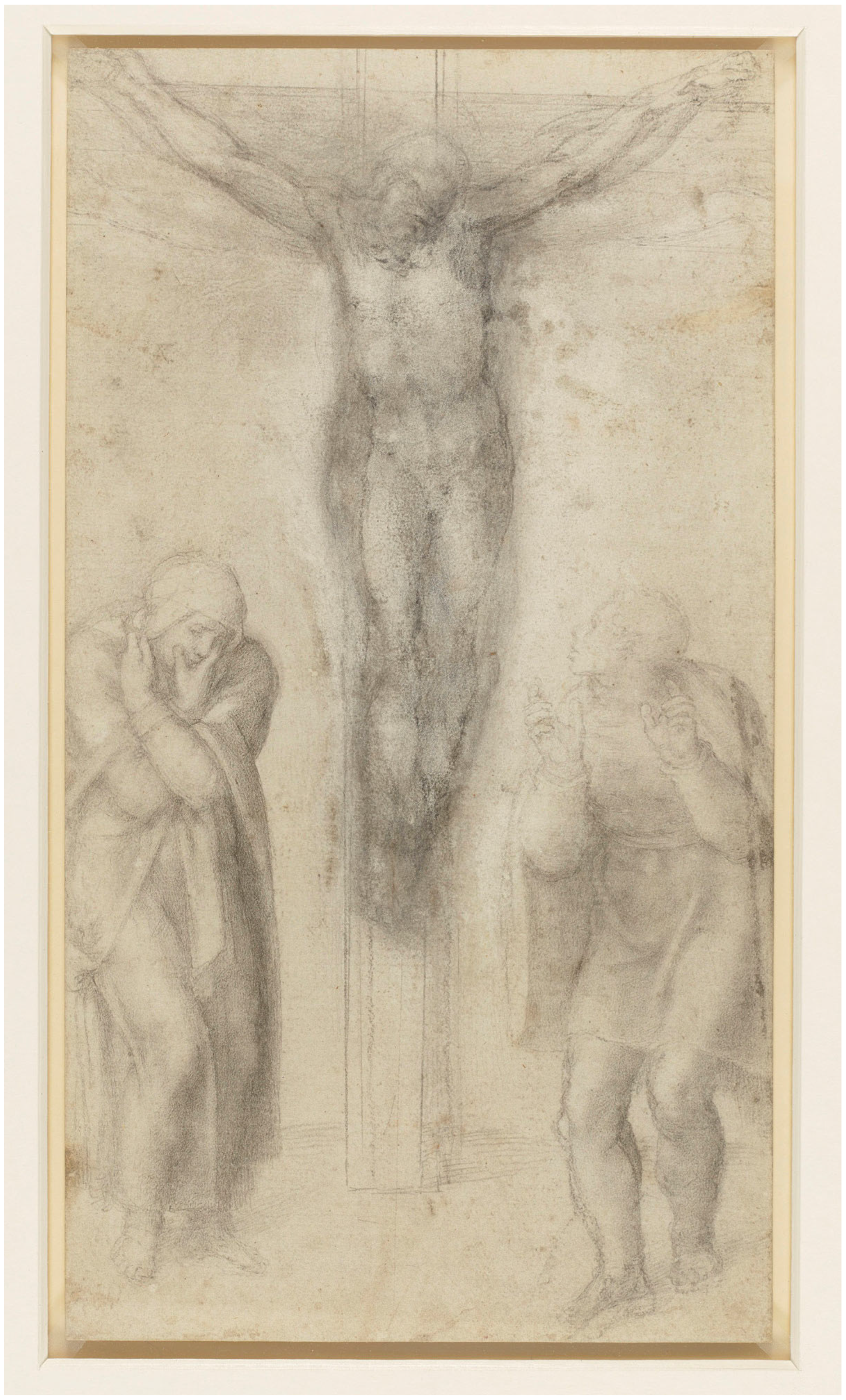

Disclaimer/Publisher’s Note: The statements, opinions and data contained in all publications are solely those of the individual author(s) and contributor(s) and not of MDPI and/or the editor(s). MDPI and/or the editor(s) disclaim responsibility for any injury to people or property resulting from any ideas, methods, instructions or products referred to in the content. |
© 2025 by the author. Licensee MDPI, Basel, Switzerland. This article is an open access article distributed under the terms and conditions of the Creative Commons Attribution (CC BY) license (https://creativecommons.org/licenses/by/4.0/).
Share and Cite
Prodan, S.R. Phenomenology of Revelation: Faith, Truth, and the Darkness of God in Sixteenth-Century Italy. Religions 2025, 16, 1486. https://doi.org/10.3390/rel16121486
Prodan SR. Phenomenology of Revelation: Faith, Truth, and the Darkness of God in Sixteenth-Century Italy. Religions. 2025; 16(12):1486. https://doi.org/10.3390/rel16121486
Chicago/Turabian StyleProdan, Sarah Rolfe. 2025. "Phenomenology of Revelation: Faith, Truth, and the Darkness of God in Sixteenth-Century Italy" Religions 16, no. 12: 1486. https://doi.org/10.3390/rel16121486
APA StyleProdan, S. R. (2025). Phenomenology of Revelation: Faith, Truth, and the Darkness of God in Sixteenth-Century Italy. Religions, 16(12), 1486. https://doi.org/10.3390/rel16121486




